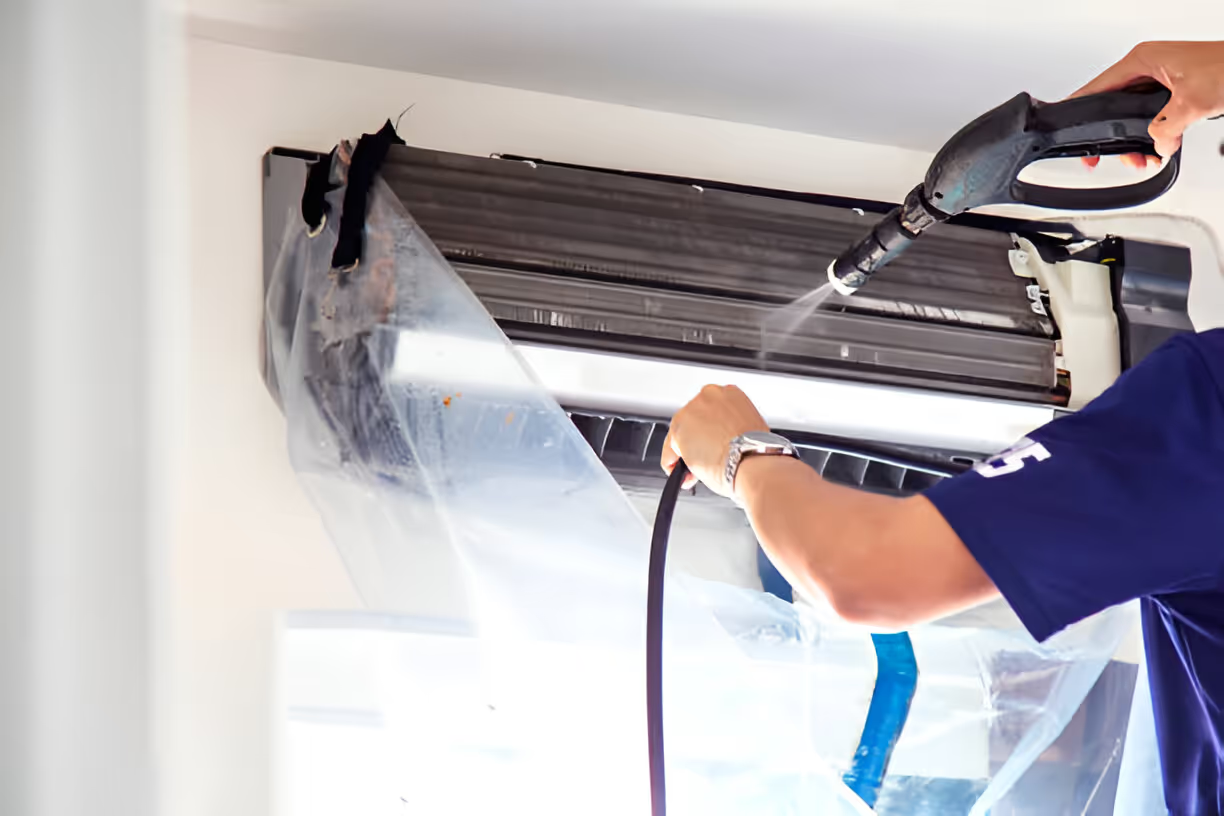Residential Air Conditioner in Tempe, AZ
Keeping your home comfortable in Tempe, AZ means choosing the right residential air conditioner and maintaining it for peak performance. With long, hot summers, intense sun exposure, and seasonal dust and monsoon storms, Tempe homes face unique cooling challenges that increase wear on systems and raise energy bills.

Why timely AC service matters in Tempe homes
Tempe’s climate puts sustained stress on residential HVAC systems. Continuous high outdoor temperatures force compressors to run longer, while airborne dust and pollen from the desert and monsoon storms clog filters and coils faster than in milder climates. Small problems left unattended often become major failures during peak heat, increasing risk of breakdowns when you need cooling most. Prompt diagnosis and appropriate action reduce energy waste, improve indoor comfort, and extend equipment life.
Common residential air conditioner issues in Tempe
Homeowners in Tempe typically see a set of recurring AC problems caused or worsened by local conditions:
- Dirty filters and coils from dust and pollen, reducing airflow and efficiency
- Refrigerant leaks or low charge, causing poor cooling and higher run times
- Compressor failures or short cycling from excessive workload or electrical stress
- Duct leaks, poor insulation, and undersized equipment leading to uneven temperatures
- Thermostat malfunctions or improper settings that create comfort complaints
- Frozen evaporator coils caused by restricted airflow or refrigerant problems
Identifying the root cause is essential. Symptoms like weak airflow, rising energy bills, frequent short cycling, or unusual noises signal a professional inspection.
Repair, replacement, and when to choose each
Repair is often the right option when issues are isolated and the system is otherwise in good condition. Common repairs include refrigerant recharge with leak repair, capacitor or contactor replacement, fan motor service, and coil cleaning. Repairs are cost-effective for newer units or when the fix restores reliable, efficient operation.
Replacement becomes more sensible when:
- The system is older than 10-15 years and efficiency is low
- Multiple major components are failing
- Comfort problems persist after repairs
- Right-sizing or modern features (variable-speed compressors, higher SEER ratings) will yield meaningful energy savings
Replacement also offers the chance to upgrade to more efficient models or ductless mini-split systems suited to Tempe homes that need zoned cooling without ductwork.
Ductless mini-split options for Tempe residences
Ductless mini-splits provide flexible cooling and are especially useful in Tempe for:
- Additions, converted garages, or rooms without existing ductwork
- Zoned comfort needs to cool only occupied spaces and reduce energy use
- Historic or stucco homes where installing ducts is disruptive
Mini-splits deliver high efficiency, rapid cooling, and individual zone control. Proper placement and sizing by a trained technician are critical to avoid undersized units and maintain comfort under Tempe’s high heat loads.
Load calculations and right-sizing
Right-sizing starts with a professional load calculation (Manual J or equivalent). This assesses:
- Square footage and ceiling heights
- Insulation levels and window orientation
- Local solar exposure and shading
- Number of occupants and typical internal heat gains
In Tempe, solar heat gain through west- and south-facing windows is a major factor. Oversized systems short-cycle and reduce dehumidification, while undersized systems run constantly and fail to maintain comfort. A correctly sized system balances capacity, efficiency, and humidity control for consistent indoor temperatures.
Typical installation process
A clear, systematic installation process ensures reliable performance and long-term satisfaction:
- Pre-install assessment including load calculation and duct inspection
- Selection of properly sized equipment and compatible components
- Removal of old equipment and safe disposal per local codes
- Precise ductwork sealing or mini-split indoor unit placement
- Refrigerant charging to manufacturer specifications and system calibration
- Electrical and safety checks, thermostat setup, and user orientation
- Post-install inspection and documentation of warranty details
Experienced technicians account for Tempe-specific issues like securing outdoor units from high sun exposure and ensuring adequate airflow around condensers.
Warranties and financing options
Most residential AC installations include manufacturer warranties for parts and recommended labor guarantees from installers. In many cases you can expect:
- Manufacturer parts warranty for compressor and major components
- Installer labor warranty covering workmanship for a specified period (example: 1 year parts and labor)
- Optional extended warranties for additional protection
Financing options are commonly available to spread the cost of replacement or high-efficiency upgrades. Financing terms vary, so reviewing warranty coverage and payment plans alongside equipment performance helps you choose the best long-term value.
Tips to maximize comfort and efficiency at home
Small changes and routine care go a long way in Tempe:
- Replace or clean filters every 1-3 months during heavy-use seasons
- Keep outdoor units clear of debris and provide shade without restricting airflow
- Seal and insulate ductwork to prevent energy loss in attics and crawl spaces
- Use programmable thermostats or zoning to reduce runtime when rooms are unoccupied
- Schedule annual maintenance before summer to catch issues early and maintain efficiency
- Consider attic insulation and window shading to lower heat gain and cooling load
Regular preventive maintenance reduces unexpected breakdowns and keeps systems operating near rated efficiency.
Final considerations
Choosing the right residential air conditioner in Tempe, AZ means matching equipment to local climate demands and your household’s comfort patterns. Whether you need a targeted repair, a replacement with a high-efficiency unit, or a ductless mini-split for zoned cooling, professional diagnostics, accurate load calculations, and a disciplined installation process are the foundation of consistent comfort and lower operating costs. Proper warranty coverage and available financing options make upgrades accessible, while routine maintenance protects your investment against Tempe’s challenging heat and dust conditions.






